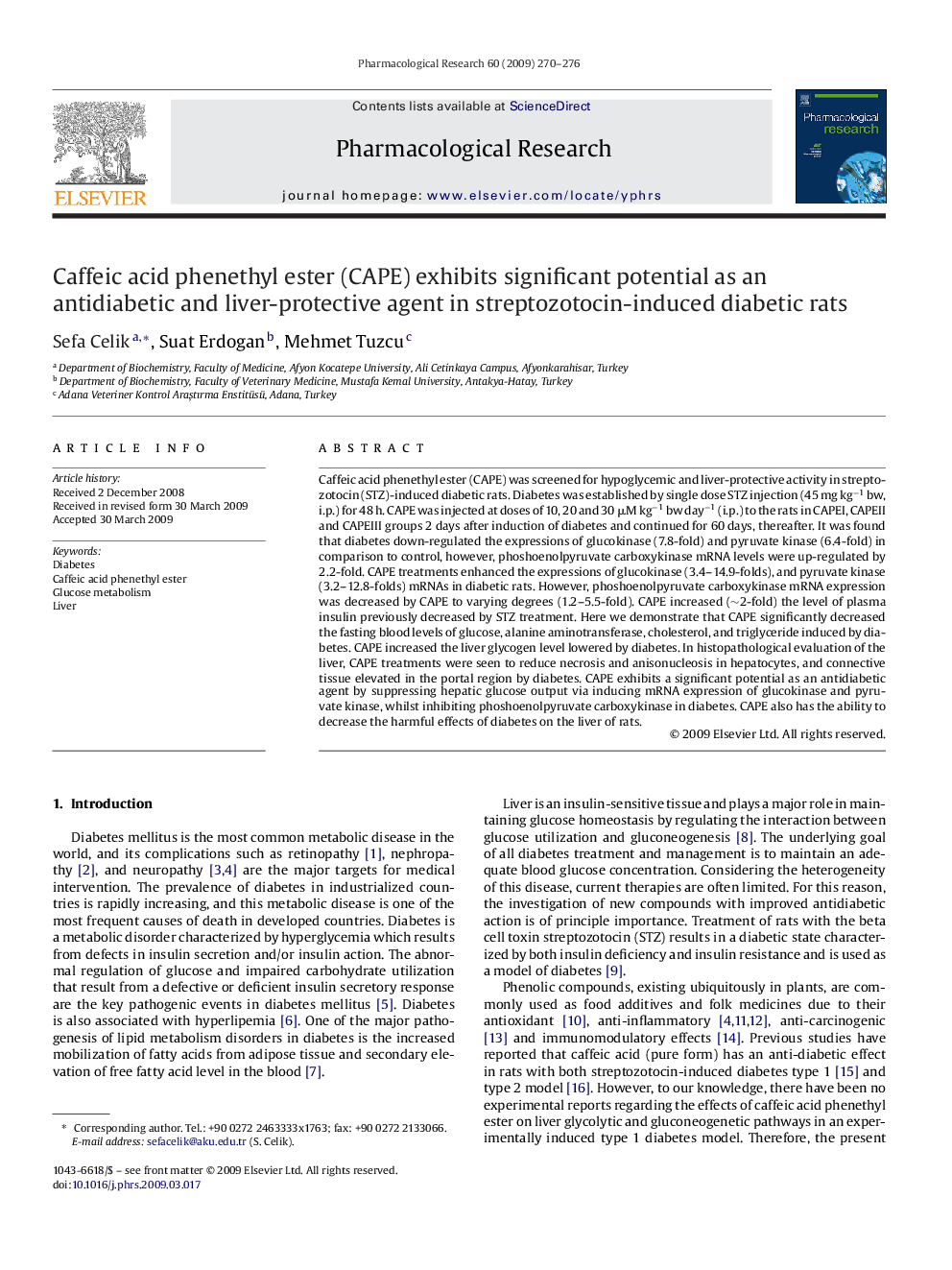| Article ID | Journal | Published Year | Pages | File Type |
|---|---|---|---|---|
| 2562839 | Pharmacological Research | 2009 | 7 Pages |
Caffeic acid phenethyl ester (CAPE) was screened for hypoglycemic and liver-protective activity in streptozotocin (STZ)-induced diabetic rats. Diabetes was established by single dose STZ injection (45 mg kg−1 bw, i.p.) for 48 h. CAPE was injected at doses of 10, 20 and 30 μM kg−1 bw day−1 (i.p.) to the rats in CAPEI, CAPEII and CAPEIII groups 2 days after induction of diabetes and continued for 60 days, thereafter. It was found that diabetes down-regulated the expressions of glucokinase (7.8-fold) and pyruvate kinase (6.4-fold) in comparison to control, however, phoshoenolpyruvate carboxykinase mRNA levels were up-regulated by 2.2-fold. CAPE treatments enhanced the expressions of glucokinase (3.4–14.9-folds), and pyruvate kinase (3.2–12.8-folds) mRNAs in diabetic rats. However, phoshoenolpyruvate carboxykinase mRNA expression was decreased by CAPE to varying degrees (1.2–5.5-fold). CAPE increased (∼2-fold) the level of plasma insulin previously decreased by STZ treatment. Here we demonstrate that CAPE significantly decreased the fasting blood levels of glucose, alanine aminotransferase, cholesterol, and triglyceride induced by diabetes. CAPE increased the liver glycogen level lowered by diabetes. In histopathological evaluation of the liver, CAPE treatments were seen to reduce necrosis and anisonucleosis in hepatocytes, and connective tissue elevated in the portal region by diabetes. CAPE exhibits a significant potential as an antidiabetic agent by suppressing hepatic glucose output via inducing mRNA expression of glucokinase and pyruvate kinase, whilst inhibiting phoshoenolpyruvate carboxykinase in diabetes. CAPE also has the ability to decrease the harmful effects of diabetes on the liver of rats.
